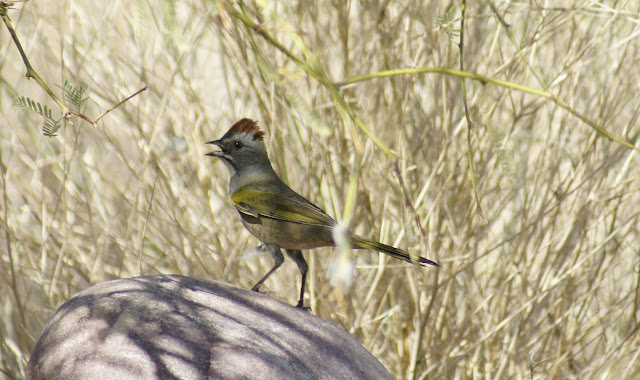This Townsend's was one of many warblers bobbing about in a group of shady trees at Encanto Park. Even from a distance and with the naked eye, it was still striking to see and obviously not like the other more ubiquitous, dull yellow birds. The Townsend's Warblers spend their spring and summer in the Pacific Northwest, and then winter in Mexico. Apparently they commonly stop in Arizona as a part of their migratory route, but this was the first I'd seen. Since it's a brief, seasonal occurrence, and I don't visit the Pacific Northwest too often, it may also be one of only a few opportunities to ever see the Townsend's. These warblers have their fall plumage in full, so they lack the black chin and their black on their face and head is not quite as dark, but I'm certainly not complaining. The black will fill in come spring time when they go a courtin'.
It's nice to have lots of contrast on a warbler, with the black, yellow, and white all making for distinct markings. It's hard enough to get a clear picture of a Warbler, and more aggravating still to get a decent image and then still be unable to identify it.
 |
| I love the yellow frame here around the bird's face. It looks like a crazy cool pair of eyebrows and mutton chops such as you'd only see on a late 19th century British Prime Minister named Townsend. |
These first photos were taken 09/18/2011 at the Encanto Park in Central Phoenix, AZ.
 |
| This is the first Townsend's Warbler I've seen, though the number may increase now that I know when and where to look. |
























